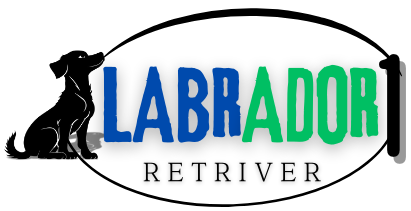Everything You Need to Know About the Lab and Terrier Mix
Picture this: a tail that never stops wagging, eyes full of curiosity, and a spirit that lights up your entire home. That’s the charm of the Lab and Terrier mix. Whether you’re thinking about bringing one home or already share your life with this delightful hybrid, understanding what makes them tick is key to giving them the best care—and getting a whole lot of love in return.
This guide will walk you through everything you need to know about the Lab and Terrier mix, from personality traits and grooming needs to diet tips and health concerns. Think of it as your go-to playbook for raising a happy, healthy, and thriving pup.
Table of Contents
🧬 What Is a Lab and Terrier Mix?
When you mix the always-friendly Labrador Retriever with the spunky, fearless energy of a Terrier, you get a one-of-a-kind companion. The Lab and Terrier mix, often affectionately called a “Terrierador,” brings together the best of both breeds—intelligence, athleticism, loyalty, and a dash of mischief.
🐕 Meet the Parents
- Labrador Retriever: Known for their easy-going, trainable, and affectionate nature.
- Terriers (e.g., Jack Russell, Pit Bull, Fox Terrier): Small to medium-sized, full of energy, alert, and brave.
The resulting mix can vary depending on the specific Terrier breed involved, but one thing’s certain—you’re getting a dog that’s smart, energetic, and full of heart.
❤️ Why You’ll Love This Mix
- Devoted and loyal by nature
- Excels in obedience and agility
- A great match for active households
- Wonderful with children when socialized properly
🧠 Personality and Temperament of a Lab Terrier Mix
If you’re looking for a dog that matches your energy, you’ll appreciate the Lab Terrier mix. They thrive on interaction and are always eager for their next adventure. But it’s not all play—this breed is also emotionally intuitive, forming strong bonds with their people.
Key Traits to Expect:
- Energetic: You’ll need to keep up!
- Affectionate: Loves cuddles and companionship
- Watchful: Naturally alert, may bark at unfamiliar sounds or people
- Independent thinker: The Terrier streak means they sometimes like doing things their own way
➡️ If left alone for too long or understimulated, this mix can turn to boredom-based behaviors like chewing or digging.
🏋️♂️ Exercise & Mental Stimulation Needs

You’re not adopting a couch potato. A Lab and Terrier mix thrives on movement and mental engagement. This isn’t a “walk around the block and done” kind of pup.
Daily Activity Checklist:
- 60–90 minutes of physical exercise
- Interactive playtime: Tug-of-war, hide-and-seek
- Mental games: Puzzle toys, obedience training
- Social interaction: Visits to dog parks, walks in new environments
Best Activities for This Mix:
- Agility courses or obstacle games
- Fetch and chase
- Hiking or long nature walks
- Water games (especially if the Lab genes dominate)
➡️ Pro Tip: Rotate toys weekly to keep things fresh and exciting.
🧼 Grooming and Maintenance
One of the advantages of this mix is a relatively easy grooming routine. However, how much grooming you’ll need depends on which parent breed dominates genetically.
Grooming Basics:
- Brushing should be done two to three times a week (daily during shedding season).
- Bathing: Every 4–6 weeks, or when dirty
- Nail trimming: Monthly or as needed
- Ear care: Weekly checks and cleaning to prevent infection
- Teeth brushing: 2–3 times a week for dental health
➡️ Tip: Use grooming sessions to bond and build trust with your pup.
🍽️ Feeding Your Lab and Terrier Mix: Nutrition Guidelines

Feeding your Lab Terrier mix properly is one of the best things you can do for their health. This breed tends to be active and muscular, but also has a tendency to overeat—so portion control is key.
Nutritional Needs by Life Stage
| Age Range | Feeding Frequency | Recommended Food Type |
|---|---|---|
| Puppy (2–12 months) | 3–4 times/day | High-protein, DHA-rich puppy food |
| Adult (1–7 years) | 2 times/day | Balanced kibble with lean proteins, grains, and healthy fats |
| Senior (8+ years) | 1–2 times/day | Joint-friendly, lower-calorie formula |
Key Dietary Tips:
- Stick with protein-rich formulas
- Include omega-3s (e.g., fish oil) for coat and joint health
- Watch for grain allergies—some Terriers are sensitive
- Avoid overfeeding; this mix is prone to weight gain
➡️ Ask your vet about calorie needs based on activity level and weight.
🏥 Health Concerns and Lifespan
Every breed has its vulnerabilities, and while mixed breeds often benefit from genetic diversity, it’s still smart to stay proactive about your dog’s health.
Common Health Issues:
- Hip and elbow dysplasia
- Allergies (skin and food-related)
- Ear infections (especially if ears are floppy)
- Eye issues (like cataracts or progressive retinal atrophy)
Life Expectancy:
With proper care, your Lab and Terrier mix can live 12 to 15 years. Routine vet check-ups, a balanced diet, and plenty of activity will keep them thriving.
🎓 Training Tips for Lab and Terrier Mixes

Training this mix is both rewarding and a little bit challenging. While the Lab side wants to please, the Terrier side may want to test boundaries.
Best Training Methods:
- Positive reinforcement: Treats, toys, and praise
- Short, fun sessions: Avoid frustration for you and your pup
- Early socialization: Introduce them to new people, pets, and environments
- Crate training: Helps with housebreaking and gives them a safe space
Common Challenges:
- Barking at strangers
- Leash pulling due to excitement
- Stubbornness during commands
➡️ Stay consistent and patient—you’ll be amazed at what they can learn.
🏡 Is a Lab Terrier Mix Right for You?
Before committing, take a moment to consider how well this mix fits into your lifestyle.
Best Fit:
- Active individuals or families
- Homes with yards or access to open spaces
- Pet parents who are committed to training and socialization
- People who can devote daily time for exercise and engagement
Not ideal if:
- You’re rarely home
- You prefer low-energy pets
- You don’t have time for training or regular activity
💰 Adoption, Cost, and Care Essentials
Adding a new furry member to your family involves more than love—it also comes with expenses.
What to Expect:
- Adoption fees: $200–$800 depending on the source
- Initial setup: Crate, leash, food, vet check (~$300–$600)
- Monthly care: Food, grooming, toys, check-ups (~$50–$100)
Where to Adopt:
- Local shelters and humane societies
- Breed-specific rescue groups
- Online platforms like Petfinder, Adopt-a-Pet
➡️ Always adopt responsibly—ask for health records and consider a meet-and-greet.
❓ Frequently Asked Questions (FAQs) About Lab and Terrier Mix Dogs
How big does a Lab and Terrier mix get?
They typically weigh 30 to 60 pounds and stand about 18 to 24 inches tall, depending on the Terrier parent.
Are Lab Terrier mixes good with children?
Absolutely. With proper training and early socialization, they’re playful and gentle with kids.
Is the Lab and Terrier mix easy to train?
Yes—with consistency. They’re intelligent and eager to please, though the Terrier side can be a bit stubborn.
What is the recommended amount of exercise for a Lab Terrier mix?
Aim for at least 60–90 minutes of activity daily to keep them happy and healthy.
Do they get along with other pets?
Often yes, especially if introduced properly while young. Some Terriers have strong prey drives, so supervision is important.
🐾 Final Thoughts: Your Next Best Friend Might Be a Lab Terrier Mix
Welcoming a Lab and Terrier mix into your life means signing up for high-energy fun, deep companionship, and a loyal partner through every adventure. They’ll challenge you, keep you active, and fill your home with laughter and love.
But they’re not for the faint of heart. You need to be ready for the commitment—time, training, and energy. If you are, this incredible hybrid will return the favor tenfold.







